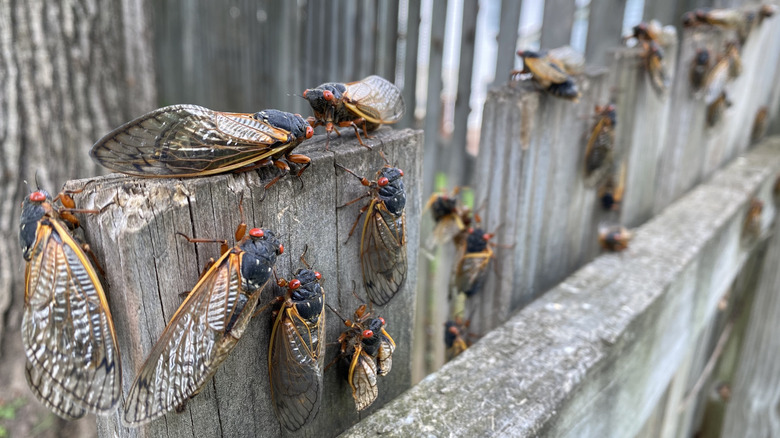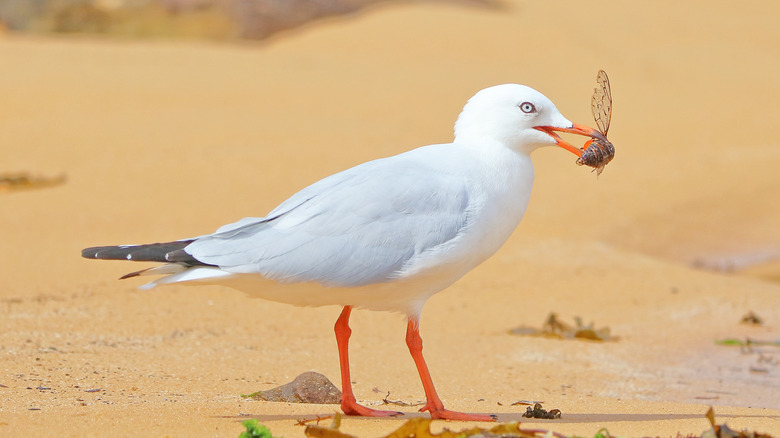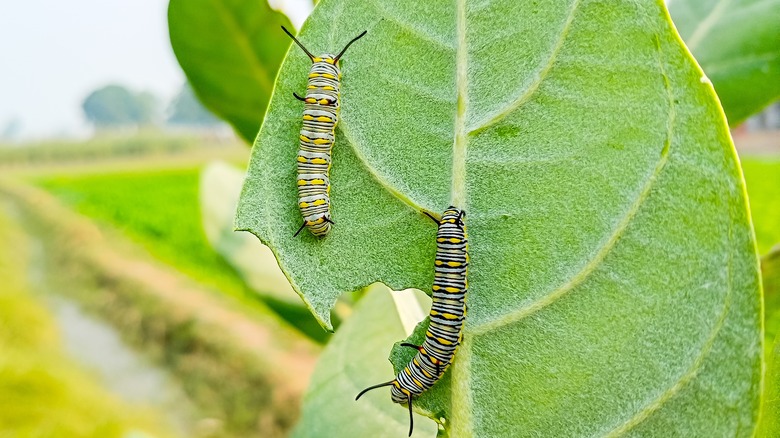Why Cicada Numbers Rising May Have A Big Effect On The Birds Near You
This year, two adjacent broods of cicadas, brood XIX and brood XIII – which emerge every 13 and 17 years, respectively — have started to appear in the eastern United States, making 2024 the year of the cicada. If you live in the states where these insects have started to emerge, you may notice differences in your local ecosystem. When large numbers of cicadas suddenly become available, birds change their diets. Rather than going after their usual insects, like caterpillars, birds will stuff themselves with cicadas.
Some scientific studies have found that these periodical emergence buffets affect birds, insects, and the plants around them. One example is how the influx of cicadas can temporarily impact bird population sizes. Additionally, with excess food, birds don't bother caterpillars, which could do more damage to oak trees and other plants. John Lill, a biologist at George Washington University and a co-author of a 2023 study about cicadas and birds, explained the change to New Scientist. "In a normal year, birds regulate insect herbivore damage, but that gets disrupted in cicada years," he said. These periodical cicada emergences can be incredible to watch, especially if you happen to spot a rare blue-eyed cicada in your yard, but the surge of these noisy insects affects not only birds but the entire surrounding ecosystem for a period of time due to these changes in the food chain.
The impact of rising cicada numbers on birds
In a 2005 study by the Ecological Society of America, it was discovered that some species of birds' population numbers were changed by periodical cicada emergences. 15 out of 24 species in the study had immense changes in population size during or after feasting on the periodical cicadas, but these differences were temporary. For example, blue jay, common grackle, brown-headed cowbird, and red-bellied woodpecker populations saw huge increases one to three years after a cicada emergence, only to decrease again later. Other species, including brown thrashers and American crows, had low population sizes at the time of emergence, which increased the next year before stabilizing, showing that the increased food sources during periodical cicadas directly impact bird populations.
Another late 2023 study found that 80 species of birds started eating cicadas during the 2021 emergence rather than some of their previous insect choices. This led to the caterpillar population increasing drastically. Zoe Getman-Pickering, an author of the study, explained in a statement how these cicada emergences impact much more than we realized: "Our findings really show how interconnected these ecosystems are, how plants, animals and all sorts of organisms are all deeply connected. When you shift the behavior or the population of one of those organisms, the effects ripple through the ecosystem in surprising ways." This research shows how delicate the balance of nature is and how periodical cicada emergences have a greater impact than was once thought.
The widespread effects of rising cicada numbers
With the double emergence of 2024, you may be thinking about how to protect your plants from cicadas, but what you should be considering is how they will impact the environment around you. When birds start changing their diets to incorporate more cicadas than other insects, it can have effects on the nearby plant life. The aforementioned 2023 study discovered that increased populations of caterpillars had some harmful results. These caterpillars ate away at oak trees, and since there were no birds picking them off, they did more damage, about twice as much, than they typically would.
While these findings do not have current, drastic consequences, they help make us aware of how each individual species can impact the ecosystem. John Lill explained in a statement what this could tell us about the future: "Birds are a really important regulator of insect herbivores and the amount of damage that plants receive. Over the last several decades, there's been a significant decline in bird populations," Lill said. "Our study provides a glimpse of what a world with fewer birds might look like. That would include increased damage to both forestry and agricultural crops, which has consequences for productivity and the economy." Though the impact of the cicadas is short-term, these insects provide us with vital information about how ecosystems can change and the damages that could occur if bird populations suffer in the future.


